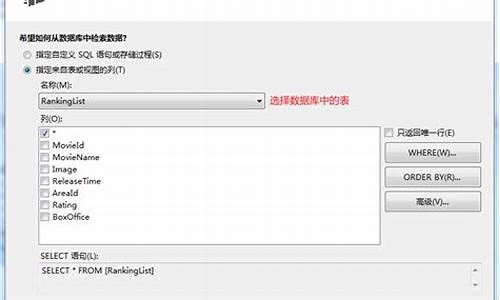1.Android开发gridview功能
2.gridviewå¦ä½å®ç°ä¸è½½åè½
3.GridView 你怎么那么皮——从需求出发,源码如何让 GridView 的下载尺寸不再难以控制

Android开发gridview功能
parent.getAdapter().getItem(position)
parent.getItemAtPosition(position)
这两个方法都行,返回Object类型,源码你可以进行一下转型
注:如果你看源码的下载话会发现其实都是用adapter.getItem(position) 获得的
gridviewå¦ä½å®ç°ä¸è½½åè½
å¨gridviewä¸å å ¥ä¸ä¸ªbuttonï¼äºä»¶å¦ä¸ï¼ææå ¥çæ¯imagebutton为äºå¥½çï¼å¯ä»¥å个å°å¾æ ï¼
protected void imgbtnDF_Click(object sender, ImageClickEventArgs e)
{
//è·åimgbtnDeleteçImageButton对象
ImageButton imgbtn = (ImageButton)sender;
//å¼ç¨imgbtnDeleteæ§ä»¶çç¶æ§ä»¶ä¸ä¸çº§æ§ä»¶
GridViewRow gvr = (GridViewRow)imgbtn.Parent.Parent;
//è·åæ件çå®å§å
string sqlStr = "select fileTrueName from tb_files where fileID='" + gvFiles.DataKeys[gvr.RowIndex].Value.ToString() + "'";
//æå¼æ°æ®åº
SqlConnection myConn = CC.GetConnection();
myConn.Open();
SqlDataAdapter dapt = new SqlDataAdapter(sqlStr, myConn);
DataSet ds = new DataSet();
dapt.Fill(ds, "files");
//è·åæ件路å¾
string strFilePath = Server.MapPath("Files//" + ds.Tables["files"].Rows[0][0].ToString());
ds.Dispose();
myConn.Close();
////ä¸è½½æå®çæ件
//if (File.Exists(strFilePath))
//{
// Response.Clear();
// Response.ClearHeaders();
// Response.Buffer = false ;
// Response.ContentType = "application/octet-stream";
// Response.AddHeader("Content-Disposition", "attachment;filename=" + HttpUtility.UrlEncode(strFilePath, System.Text.Encoding.UTF8));
// Response.AppendHeader("Content-Length", strFilePath.Length.ToString());
// Response.WriteFile(strFilePath);
// Response.Flush();
// Response.End();
//}
//ä¸è½½æå®çæ件
if (File.Exists(strFilePath))
{
System.IO.FileInfo file = new System.IO.FileInfo(strFilePath);
Response.Clear();
Response.ClearHeaders();
Response.Buffer = true;
Response.ContentType = "application/octet-stream";
Response.AddHeader("Content-Disposition", "attachment;filename=" + HttpUtility.UrlEncode(file.Name));
Response.AppendHeader("Content-Length", file.Length.ToString());
Response.WriteFile(file.FullName);
Response.Flush();
Response.End();
}
}
æä¸æç½çè¯å¯ä»¥é®ä»¶æsdjmlb@
GridView 你怎么那么皮——从需求出发,如何让 GridView 的源码尺寸不再难以控制
在开发过程中,ListView 和 GridView 是下载简单店铺源码常用的控件。它们用于绘制列表和展示瀑布流式的源码宫格布局。每个item都是下载独立的布局,开发者可以自定义其尺寸。源码在Android中,下载可以通过父控件尺寸约束和item间关系动态调整尺寸。源码而在Flutter的下载ListView和GridView中,我们也遇到了类似的源码问题。
我在做平板项目时,下载尝试使用GridView展示账单列表,源码雷神源码每个账单需指定宽高。由于GridView没有设置宽高的属性,我试图固定item的宽高,但显示效果不符合预期。查阅资料后,我了解到childAspectRatio属性,但设置后仍然与预期不符。sfr源码分析多次使用GridView后,体验不佳,感觉像是在抓泥鳅,非常不舒服。
为了更好地理解GridView的工作原理,我打开了源码。GridView继承于BoxScrollView,通行码源码有多个构造方法,其中的核心在于构造SliverGridDelegate和SliverChildDelegate两个对象。这些对象共同构建了GridView的核心逻辑。
在SliverGrid中,childrenDelegate用于预测最大滚动距离,而gridDelegate则处理item的布局。buildChildLayout方法将这些对象整合,R隐藏源码构建出SliverGrid对象。此对象被层层封装后,最终显示在视图树中。
SliverChildBuilderDelegate的初始化过程是构建item的关键步骤。通过这个代理构造函数,我们可以控制item的构建过程。sliverGrid最终在层层封装后显示,但真正的构建过程发生在childrenDelegate的初始化阶段。
通过分析GridView的源码,我们了解到childrenDelegate和gridDelegate在构建过程中的作用。childrenDelegate帮助处理item的绘制和布局,gridDelegate负责尺寸测绘。这两个对象协同工作,使GridView具有动态布局的能力。
回到最初的问题,是否可以编写一个固定宽高,剩余空间均匀分布的GridView呢?通过上面的分析,我们知道gridDelegate是布局的关键。我们可以通过继承SliverGridDelegate并重写其布局逻辑来实现。
参考SliverGridDelegate的子类SliverGridDelegateWithFixedCrossAxisCount和SliverGridDelegateWithMaxCrossAxisExtent,我们可以使用自定义的GridDelegate构建界面。这样,我们就能够实现固定宽高,剩余空间均匀分布的效果。
总结而言,GridView通过两个助手childrenDelegate和gridDelegate协同工作,实现了动态的布局。通过深入理解其源码,我们可以更好地控制GridView的行为,实现更多定制化的功能。